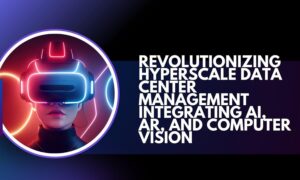The educational landscape is evolving rapidly, driven by advancements in technology that promise to transform traditional teaching methods. One of the most exciting developments is the integration of Augmented Reality (AR) in classrooms. This innovation has the potential to revolutionize how students learn and interact with educational content. In this article, we will explore the future of education through the lens of AR, discussing its benefits, applications, challenges, and the potential it holds for transforming the classroom experience.
Understanding Augmented Reality (AR)
What is Augmented Reality?
Augmented Reality (AR) is a technology that overlays digital information—such as images, videos, or 3D models—onto the real world. Unlike Virtual Reality (VR), which creates a completely immersive digital environment, AR enhances the real-world experience by adding interactive elements that can be accessed via devices like smartphones, tablets, or AR glasses. This blend of real and virtual worlds offers a dynamic way to present information and engage users.
AR in Education:
An Overview
In the context of education, AR can be used to create immersive learning experiences that make abstract concepts tangible and engaging. It can transform traditional textbooks and classrooms into interactive environments where students can visualize complex ideas, participate in virtual experiments, and explore new perspectives.
Benefits of Integrating AR in Classrooms
Enhancing Engagement and Motivation
One of the primary benefits of AR in education is its ability to enhance student engagement and motivation. Interactive AR content can make learning more enjoyable and interesting, capturing students’ attention and encouraging active participation. This increased engagement can lead to better retention of information and improved academic performance.
Facilitating Experiential Learning
AR enables experiential learning, where students learn by doing and experiencing rather than merely listening or reading. For example, AR applications can simulate historical events, allowing students to witness and interact with re-enactments. In science classes, AR can bring abstract concepts like molecular structures to life, providing a hands-on learning experience without the need for physical lab equipment.
Personalizing Learning Experiences
AR can be tailored to meet individual learning needs, offering personalized content that caters to different learning styles and paces. Students can interact with AR materials at their own speed, revisiting challenging concepts and advancing as they grasp the material. This personalized approach helps accommodate diverse learners, ensuring that no student is left behind.
Bridging the Gap Between Theory and Practice
By integrating AR into the curriculum, educators can bridge the gap between theoretical knowledge and practical application. For instance, medical students can use AR to simulate surgeries, gaining practical experience in a controlled, risk-free environment. Similarly, engineering students can interact with 3D models of machinery, understanding their mechanics without the need for physical prototypes.
Applications of AR in Education
Interactive Textbooks
Traditional textbooks can be enhanced with AR to provide a richer learning experience. By scanning QR codes or images in the book with a smartphone or tablet, students can access supplementary materials such as videos, animations, and interactive quizzes. This multimedia approach can help clarify complex topics and make learning more dynamic.
Virtual Field Trips
AR can take students on virtual field trips to places they might not otherwise have the opportunity to visit. With AR apps, students can explore historical landmarks, museums, or even outer space, all from the comfort of their classroom. These virtual excursions can provide context and depth to subjects like history, geography, and science, making them more relatable and exciting.
Gamified Learning
Gamification of education through AR can turn learning into a fun and competitive activity. Educational games that incorporate AR elements can motivate students to achieve learning objectives while enjoying the process. For example, AR scavenger hunts can be used to teach subjects like biology, where students search for virtual plants and animals in their environment, learning about them as they go.
Augmented Labs
Science education can benefit significantly from AR-enhanced labs. Students can conduct virtual experiments, observing chemical reactions, and biological processes in a safe, controlled virtual environment. This approach not only reduces the need for expensive lab equipment but also ensures safety, as students can experiment without the risk of harmful accidents.
Challenges of Integrating AR in Classrooms
Technological Barriers
While AR offers numerous benefits, its integration into classrooms faces several challenges. One of the primary obstacles is the technological infrastructure required to support AR. Schools need to invest in AR-compatible devices and ensure that their networks can handle the increased data load. This can be a significant financial burden, especially for underfunded schools.
Training Educators
For AR to be effectively integrated into the curriculum, educators need to be trained in its use. This includes not only technical training on how to operate AR devices and applications but also pedagogical training on how to incorporate AR into lesson plans effectively. Without proper training, teachers may struggle to utilize AR to its full potential.
Content Development
Creating high-quality AR educational content is another challenge. Developing interactive AR materials requires specialized skills and can be time-consuming. Moreover, the content needs to be aligned with educational standards and curriculum requirements, ensuring that it is both educationally valuable and engaging for students.
Accessibility and Equity
Ensuring that all students have equal access to AR technology is crucial. This means addressing issues related to the digital divide, where some students may not have access to the necessary devices or internet connectivity at home. Schools must work towards providing equal opportunities for all students to benefit from AR-enhanced learning.
The Future of AR in Education
Collaborative Learning Environments
The future of AR in education holds the promise of more collaborative and interactive learning environments. AR can facilitate group activities where students work together on projects, sharing AR resources and solving problems collectively. This collaborative approach can foster teamwork and communication skills, essential for success in the modern world.
Advanced Simulations
As AR technology continues to advance, we can expect more sophisticated simulations that offer deeper, more realistic learning experiences. These advanced simulations can be particularly beneficial in fields like medicine, engineering, and environmental science, where practical experience is crucial. Students will be able to practice complex procedures and explore intricate systems in ways that were previously impossible.
Integration with Other Technologies
AR is likely to be integrated with other emerging technologies, such as Artificial Intelligence (AI) and the Internet of Things (IoT), to create even more powerful educational tools. AI can provide personalized learning experiences by analyzing student performance and adapting content accordingly, while IoT can connect AR devices with real-world objects, creating seamless interactions between the physical and digital worlds.
Lifelong Learning
The impact of AR on education is not limited to traditional classrooms. AR has the potential to support lifelong learning, providing opportunities for individuals to acquire new skills and knowledge at any stage of their lives. Whether through professional training, hobbyist activities, or general education, AR can make learning a continuous, engaging process.
Conclusion
Integrating Augmented Reality into classrooms represents a significant step towards the future of education. By enhancing engagement, facilitating experiential learning, and offering personalized and practical experiences, AR has the potential to transform how we teach and learn. However, the successful implementation of AR in education requires overcoming technological, training, and accessibility challenges. As we move forward, the continued development and integration of AR, along with other advanced technologies, will shape an educational landscape that is more interactive, inclusive, and effective. The future of education, enriched by AR, promises a world where learning is a dynamic and immersive experience, preparing students for the complexities of the modern world.



































